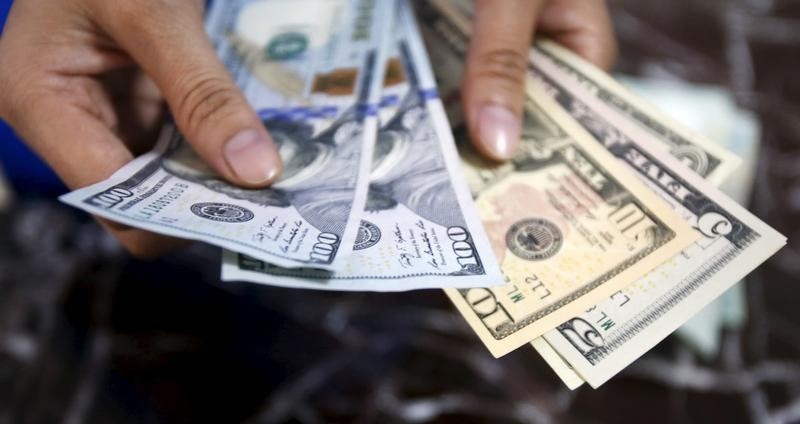By Herbert Lash
NEW YORK (Reuters) - Global equity markets slid for a second day and the dollar sank to a seven-week low on Wednesday as weak U.S. retail sales and a drop in producer prices boosted expectations the Federal Reserve will not raise interest rates until next year.
Mixed earnings from major U.S. banks, limp inflation figures from China and further declines in commodities also helped dampen the appetite for stocks and the dollar.
U.S. retail sales rose 0.1 percent last month as cheaper gasoline weighed on service station receipts, while sales in August were revised down to unchanged from a prior rise of 0.2 percent, the Commerce Department said.
In a separate report, producer prices fell 0.5 percent last month, the largest drop since January, the Labor Department said. The index fell 1.1 percent in the 12 months through September, its eighth straight 12-month decrease.
The two reports suggested the U.S. economy may be losing momentum in the face of slowing global growth and a strong dollar. U.S. job growth braked sharply in the past two months.
"There's some disappointment about the retail number and the mixed picture in banks," said Rick Meckler, president of hedge fund LibertyView Capital Management LLC in Jersey City, New Jersey.
"We're in that point where we rallied off the low and the next step is less certain. The corporate earnings will probably help decide it, but we're only at the beginning of the reporting period," Meckler said.
The reaction to retail sales may be overdone, as on a year-over-year basis, the data shows the American consumer is doing just fine, said Russell Price, senior economist at Ameriprise Financial Services Inc in Troy, Michigan.
"The solid consumer story remains in place," Price said. "We've hit a little bit of softness with hiring and manufacturing activity, but I think those are relatively temporary factors," he said.
MSCI's all-country world index of the equity performance of 46 countries fell 0.32 percent, while the pan-regional FTSEurofirst 300 index in Europe closed down 0.8 percent at 1,405.78.
Stocks on Wall Street declined, with the Dow pulled sharply lower on an earnings warning from Wal-Mart Stores Inc (N:WMT) that cut its share price 10 percent to $60.03, its worse one-day performance in more than 17 years.
The Dow Jones industrial average closed down 157.14 points, or 0.92 percent, to 16,924.75. The S&P 500 fell 9.45 points, or 0.47 percent, to 1,994.24 and the Nasdaq Composite lost 13.76 points, or 0.29 percent, to 4,782.85.
Of the three big U.S. banks that have posted earnings, only Wells Fargo (N:WFC) & Co managed to increase revenue. JPMorgan (N:JPM) shares fell 2.5 percent to $59.99, a day after the bank reported third-quarter results that fell short of estimates.
Wells Fargo fell 0.7 percent to $51.50, while Bank of America (N:BAC) rose 0.8 percent to $15.64 after the bank reported a profit, compared with a year-earlier loss.
The dollar fell to a seven-week low against a basket of currencies as signs of slowing growth may cause Fed policymakers to abandon plans for a possible rate increase later this year.
"The dollar is weakening because of the expectations that a Fed rate hike is being pushed further and further out," said Michael Arone, chief investment strategist at State Street Global Advisors' U.S. Intermediary Business in Boston.
The dollar index was last down 0.85 percent at 93.957. Against the yen, the dollar fell 0.77 percent, to 118.81 yen, while the euro reached a 3-1/2-week high against the greenback. It was last up 0.84 percent at $1.1471.
Oil eased further below $50 a barrel, falling for a third day on concern a supply glut will persist and demand will slow as economic growth moderates in No. 2 consumer China.
Brent crude fell 9 cents to settle at $49.15 a barrel. Prices have more than halved from June 2014. U.S. crude settled down 2 cents at $46.64 a barrel.
U.S. Treasury yields slumped to their lowest levels in over a week on views the Fed will delay a rate hike.
Rates futures showed traders anticipate the first Fed rate increase since 2006 would occur at the Federal Open Market Committee meeting in April 2016.

Prices on 10-year Treasuries were up 21/32 to yield 1.9806 percent.